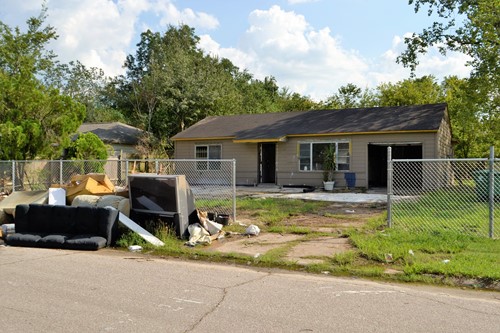
Photo by F. Muhammad via Pixabay
Each year, flooding causes more than eight billion dollars in damages to homes in the United States. Despite that, many affected homeowners go on to sell their houses so that they can relocate. When your home has damage from a tropical storm, heavy rains, or rising water from a hurricane, here are ways to help your home retain its value.
The crucial first 48 hours
Do your best to minimize the damage. If you know flooding is possible, use sandbags around the foundation, board up windows, fill in crevices around vents and pipes with expandable waterproof insulation. After damage occurs, in the first two days, it is essential that you go through this checklist as quickly and thoroughly as you can.
- Protect yourself. Flood water often has contaminants and dangerous materials, mold and bacteria. If your flooding includes back-up sewerage, this is especially crucial. Wear industrial-quality gloves, rubber boots, masks, and other protective gear.
- Make lists of the damage. Walk around your home and write down everything that is affected by the water. Separate the list by those items attached to your home and those that are separate such as furnishings and personal belongings. These could be very long lists, so write down everything.
- Take photos of all the damage with your smartphone or digital camera. Capture images of the walls, floors, cabinets, outlets, doors, windows, and ceiling if water leaked in from above — document everything.
- Contact your insurance company. They will send out a catastrophic storm damage adjuster to assess the damages. Even if FEMA may cover the costs, ask your insurance adjuster to document everything as well. Compare their list to yours to make sure nothing is left off. Your insurance company may be able to help you restore and repair much of the damage. Professionally mitigated and restored damage makes a tremendous difference when you go to sell your home.
- Once you've documented everything, remove anything that retains moisture from the house. These include carpet and padding, fabric, bedding, furniture, clothing, drywall, and insulation. Doing so lowers the opportunity for mold to take hold in the house. It only takes mold 48 hours to begin germinating, so time is of the essence.
- Rent a dehumidifier to dry out your home. If your HVAC system is unaffected, run the air (heat or cold depending on outdoor temperatures) to help dry things out, too.
- Using a utility knife, cut away and discard any damaged or wet drywall or wallboard and any damp insulation behind it. Spray the remaining walls and the framing of the damaged walls with a solution of nine-parts water with one-part bleach.
Repair or Sell "As-Is."
Make all repairs that your insurance or FEMA covers. If other repairs remain, you might decide to fix them yourself or sell your home just as it is. If you completely restore your home, it likely will sell for more. But if the return on your investment isn't high enough, you may end up losing out in the long run. Here is where you need the advice of a professional. Your real estate agent can help you determine which items to repair and which won't give you any return. Remember, though, that if your relocation is time-sensitive, whatever sells quicker can save you in the long run.
About the Author
